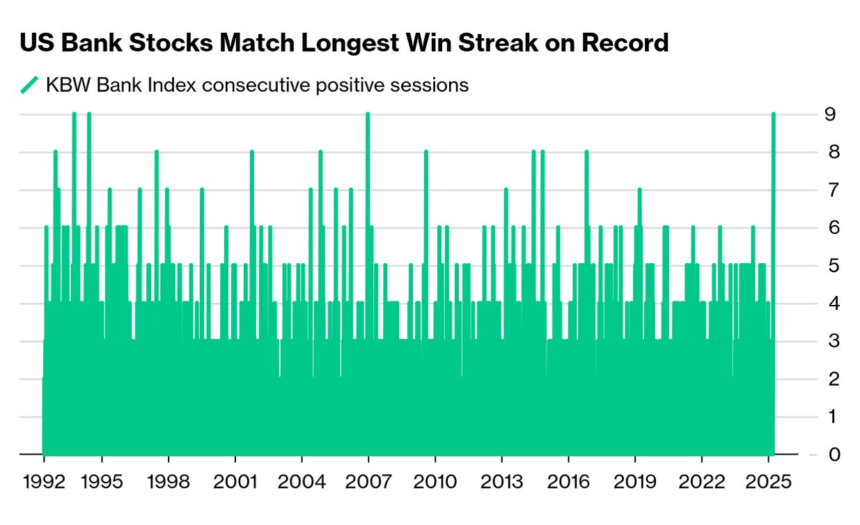Bank stocks have long been regarded as the backbone of financial markets. When you think of stability, long-term dividends, and steady growth, bank stocks often top the list. Yet, many investors—especially beginners—overlook this powerful sector in favor of trendier, high-volatility options like tech startups or cryptocurrency. But understanding bank stock ownership isn’t just about adding another asset class to your portfolio; it’s about recognizing a cornerstone of economic infrastructure that has stood the test of time.
This article will dive deep into the concept of bank stocks, how they function, why they matter, and how investors can benefit from owning them. If you’re curious about financial literacy, portfolio diversification, or building wealth through long-term investment, you’ll find this deep dive into the world of bank stocks incredibly valuable.
What Is a Bank Stock?
At its core, a bank stock represents ownership in a financial institution. Like all common stocks, it entitles the shareholder to a portion of the company’s profits, usually in the form of dividends and capital appreciation. Banks generate income primarily by lending money at higher interest rates than what they pay to depositors. This interest spread creates profitability, which in turn supports stock performance.
There are two major types of banks investors might invest in:
- Commercial Banks – These are traditional banks like JPMorgan Chase, Bank of America, and Wells Fargo. They provide checking accounts, savings accounts, loans, and other financial services to consumers and businesses.
- Investment Banks – These institutions, such as Goldman Sachs or Morgan Stanley, focus more on asset management, trading, and underwriting.
Investors can buy bank stocks through regular brokerage accounts, retirement accounts, or ETFs that focus on financial services. Understanding the type of bank you’re investing in helps clarify the risk profile and potential returns.
Why Invest in Bank Stocks?
Investing in bank stocks offers a wide array of advantages that cater to both conservative and growth-oriented investors. Here are a few compelling reasons why bank stock ownership can be valuable:
1. Consistent Dividend Payments
Banks are known for paying regular dividends. These dividends often increase annually and offer a steady income stream for investors. This makes bank stocks attractive for retirees or those seeking passive income.
2. Exposure to Economic Growth
As the economy grows, so does the demand for loans, credit cards, and mortgages—all of which contribute to a bank’s revenue. When the economic cycle is on an upswing, banks are among the biggest beneficiaries.
3. Strong Regulatory Oversight
While regulation can sometimes limit profitability, it also reduces risk. After the 2008 financial crisis, regulatory bodies enforced strict guidelines that make today’s banks much more stable and less prone to failure.
4. Valuation Metrics Favor Long-Term Holders
Bank stocks often trade at attractive valuation multiples, such as price-to-earnings (P/E) and price-to-book (P/B) ratios. This makes them a great choice for value investors.
Risks Involved in Bank Stock Investing
No investment is risk-free, and bank stocks are no exception. Before diving in, it’s crucial to understand the unique risks associated with this sector.
1. Interest Rate Sensitivity
Banks earn profits from the difference between the interest they pay and what they charge. This spread, called the net interest margin, is highly sensitive to changes in central bank policies. An unexpected rate cut can squeeze margins and affect earnings.
2. Credit Risk
Economic downturns may lead to increased loan defaults, hurting the bank’s balance sheet. This is especially true for banks heavily exposed to consumer lending or subprime borrowers.
3. Regulatory Changes
Regulatory reforms can alter how banks operate, sometimes capping their earnings potential. Compliance costs and capital requirements can be high.
4. Market Sentiment
Bank stocks can be significantly impacted by market fears—even if the actual fundamentals remain strong. During times of financial uncertainty, investors often shy away from the financial sector.
Understanding Key Financial Metrics
When evaluating a bank stock, it’s important to look beyond surface-level performance. Here are some key financial metrics investors should keep an eye on:
1. Net Interest Margin (NIM)
This metric measures the difference between interest income and the interest paid to depositors, expressed as a percentage. A higher NIM indicates better profitability.
2. Return on Assets (ROA)
ROA shows how effectively a bank uses its assets to generate profit. It is calculated as Net Income / Total Assets. For banks, an ROA over 1% is considered strong.
3. Return on Equity (ROE)
ROE tells investors how well the bank is using shareholder equity to generate profits. It’s a critical metric for evaluating management effectiveness.
4. Efficiency Ratio
This ratio shows how well a bank is controlling its costs. A lower efficiency ratio means the bank is operating efficiently.
5. Loan-to-Deposit Ratio
This reveals how much of the bank’s deposits are being used for lending, which can affect liquidity.
How to Invest in Bank Stocks
If you’re ready to begin investing in bank stock, here are the key steps:
1. Choose the Right Brokerage
Pick a brokerage that offers low fees and access to a broad range of financial institutions. Whether it’s Fidelity, Vanguard, or Robinhood, make sure you’re comfortable with their interface and customer service.
2. Select Individual Stocks or ETFs
If you prefer hands-on investing, individual bank stocks allow for more control. Alternatively, ETFs like the Financial Select Sector SPDR Fund (XLF) provide diversified exposure to multiple banks.
3. Conduct Fundamental Analysis
Study the financial health of the institution. Examine quarterly earnings, debt levels, and regulatory reports.
4. Diversify Your Holdings
Don’t put all your eggs in one basket. Consider investing in a mix of large, regional, and international banks to spread risk.
5. Monitor Regularly
Bank stocks are not “set and forget.” Keep an eye on interest rate changes, economic indicators, and quarterly reports.
Top Bank Stocks to Watch
Here are some popular and well-regarded bank stocks that have proven resilient and profitable over time:
1. JPMorgan Chase (JPM)
As one of the largest banks in the U.S., JPMorgan Chase offers a mix of commercial and investment banking. It has a stellar dividend history and strong capital base.
2. Bank of America (BAC)
Known for its widespread consumer banking operations, BAC is a favorite among long-term investors looking for solid dividend growth and rising profitability.
3. Wells Fargo (WFC)
Despite past scandals, Wells Fargo remains a top pick due to its massive consumer banking base and efforts toward restructuring.
4. Citigroup (C)
With a strong international presence, Citigroup gives exposure to global markets and is often undervalued by analysts.
5. Goldman Sachs (GS)
An investment bank rather than a commercial one, Goldman Sachs thrives on trading revenue and asset management services.
Global Perspective: Bank Stocks Around the World
U.S. banks aren’t the only ones worth considering. Some international bank stocks provide attractive growth and diversification opportunities:
- HSBC Holdings (UK)
- Toronto-Dominion Bank (Canada)
- Banco Santander (Spain)
- ICICI Bank (India)
- Mitsubishi UFJ Financial Group (Japan)
These institutions can offer growth in emerging markets, currency diversification, and access to less saturated economies.
The Role of Bank Stocks in a Balanced Portfolio
One of the key principles of successful investing is diversification. Bank stock ownership fits into a well-balanced portfolio by offering:
- Dividend income
- Lower volatility compared to tech stocks
- Inflation protection when interest rates rise
- A hedge against economic growth trends
While they may not offer the explosive growth of high-risk sectors, they provide durability and predictability, which are vital in uncertain times.
Long-Term vs. Short-Term Investing in Bank Stocks
Bank stocks can be approached from both long-term and short-term perspectives.
Long-Term Benefits:
- Steady dividend reinvestment
- Compounding returns
- Lower tax implications if held in retirement accounts
Short-Term Opportunities:
- Earnings season volatility
- Central bank interest rate shifts
- Sector rotation trades
Most financial advisors recommend a long-term approach, especially for retail investors, but savvy traders can exploit short-term inefficiencies as well.
ESG and Ethical Banking
The rise of ESG (Environmental, Social, and Governance) investing has affected how investors evaluate bank stock. Today, factors like ethical lending, carbon neutrality, and community reinvestment matter to many shareholders.
Several banks now publish ESG reports, and investment products exist that specifically target ESG-compliant banks. This adds another dimension to evaluating bank stock beyond just profit and loss.
Bank Stocks as Financial Building Blocks
Investing in bank stocks is not just about chasing dividends or betting on interest rates—it’s about placing your capital in institutions that power the economy. From enabling business growth to facilitating personal wealth creation, banks are at the center of global finance.
By understanding the risks and rewards of bank stock ownership, investors can make informed decisions that serve their long-term goals. Whether you’re building a retirement nest egg or diversifying an aggressive portfolio, bank stocks deserve a serious look.
So the next time you’re rebalancing your investment strategy, don’t overlook this solid, time-tested sector. Bank stocks might just be the financial cornerstone your portfolio needs.

